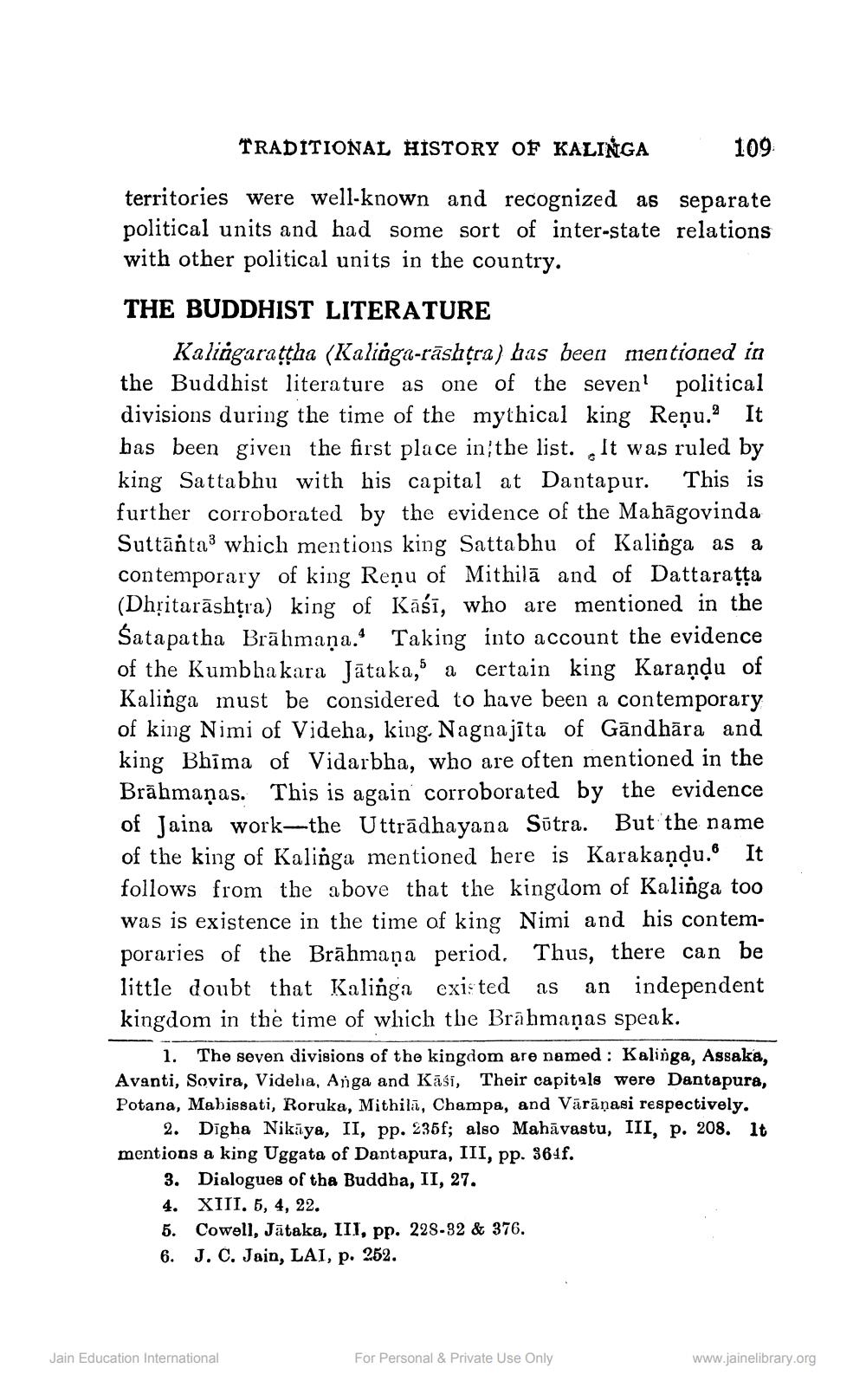________________
TRADITIONAL HISTORY OF KALINGA
109
territories were well-known and recognized as separate political units and had some sort of inter-state relations with other political units in the country.
THE BUDDHIST LITERATURE
Kalingaratha (Kalinga-rashtra) bas been mentioned in the Buddhist literature as one of the seven' political divisions during the time of the mythical king Reņu. It bas been given the first place in the list. It was ruled by king Sattabhu with his capital at Dantapur. This is further corroborated by the evidence of the Mahāgovinda Suttāntawhich mentions king Sattabhu of Kalinga as a contemporary of king Reņu of Mithilā and of Dattaratta (Dhțitarāshțra) king of Kāść, who are mentioned in the Śatapatha Brāhmaṇa. Taking into account the evidence of the Kumbhakara Jātaka, a certain king Karandu of Kalinga must be considered to have been a contemporary of king Nimi of Videha, king. Nagnajíta of Gāndhāra and king Bhīma of Vidarbha, who are often mentioned in the Brāhmaṇas. This is again corroborated by the evidence of Jaina work--the Uttrādhayana Sūtra. But the name of the king of Kalinga mentioned here is Karakandu. It follows from the above that the kingdom of Kalinga too was is existence in the time of king Nimi and his contemporaries of the Brāhmaṇa period. Thus, there can be little doubt that Kalinga existed as an independent kingdom in the time of which the Brāhmaṇas speak.
1. The seven divisions of the kingdom are named: Kalinga, Assaka, Avanti, Sovira, Videha, Anga and Kāśi, Their capitals were Dantapura, Potana, Mabissati, Roruka, Mithila, Champa, and Vārāṇasi respectively.
2. Dīgha Nikaya, II, pp. 235f; also Mahāvastu, III, p. 208. It mentions a king Uggata of Dantapura, III, pp. 364f.
3. Dialogues of tha Buddha, II, 27. 4. XIII. 5, 4, 22. 5. Cowell, Jātaka, III, pp. 228-32 & 376. 6. J. C. Jain, LAI, p. 252.
Jain Education International
For Personal & Private Use Only
www.jainelibrary.org




